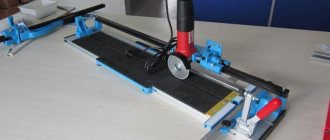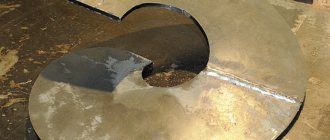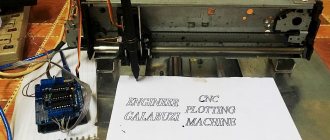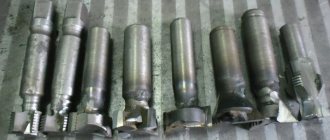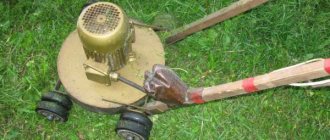A miracle stove is a special small heating device that is used to heat small rooms. The device runs on diesel fuel, but kerosene can also be used.
The miracle oven is a small rectangular body. In its rear part there is a special container for filling fuel, and in the center there is a removable tank (a bowl for a wick), which are connected to each other.
In the bowl there is a burner wick on a cylindrical base, and at the outlet pipe there is a valve that regulates the flow of fuel. At the top of the burner there is a screw for adjusting and controlling the device, and behind it there is a special reflective surface.
Principle of operation
The fuel gradually enters the annular reservoir and impregnates the fiberglass wick, which begins to burn. The gaseous mixture moves into the combustion chamber, in which it burns out gradually and evenly. The burner gives off heat, and the reflective stainless surface increases the efficiency of the device.
Special cylinders located in the combustion chamber provide the opportunity to use infrared heating mode, as well as convection. The stainless steel surface heats up to 800°C and begins to warm up the air in the room, and infrared rays, reflected from the screen, heat objects located in the room.
Diesel Sheet Metal Heater
Externally, diesel stoves for metal garages look like two disks joined together by a tube with many holes and an outlet pipe for combustion products on top. The device is assembled from two containers, which are connected to each other by a wick bowl, that is, a wide pipe with holes for air supply and smoke removal.
Diesel fuel enters the wick container from the fuel tank by gravity. In it, diesel fuel is heated and converted into a mixture of gas and air. It enters the combustion chamber, where it ignites. A spiral placed in the upper part of the combustion chamber acts as a heat exchanger. It can heat up to 800 ℃. The waste is discharged through a chimney.
This design is safe, economical and does not harm the environment. Assembly requires 2 sheets of 5 mm metal. The chimney is placed far from the door; it has two elbows nested inside each other. The container located below is the firebox and fuel tank. Fuel is poured into it through a hole. Capacity volume – from 2 to 12 liters.
Advantages and disadvantages
The positive qualities of the miracle stove include:
- Does not require connection to centralized heating or electricity.
- Small compact sizes.
- Available and inexpensive fuel.
- Low price.
- The presence of a screw that allows you to adjust the intensity of heat supply.
- The ability to use the device to heat food or water.
- There is no need to build a chimney, since there is no open fire from the stove.
- Device mobility.
- Low weight.
- Economical fuel consumption, about 200 to 400 g/hour.
- Convenient to use.
- For installation, you do not need to take out special permits or coordinate the project with the relevant authorities.
There are also disadvantages, for example:
- The appliance should not be used for continuous heating of a room, as it emits an unpleasant odor and may release smoke into the air.
- Requires periodic replacement of wicks.
- The device should be cleaned from time to time.
- Requires a specially equipped place and strict compliance with fire safety standards.
- Unpleasant smell.
Construction of a diesel fuel stove
General recommendations
When assembling a heating unit yourself, you should remember that liquid fuel stoves belong to the dangerous class, especially a gasoline stove. Increased attention and compliance with basic safety precautions is required.
In addition to the risk of fire, there is a high risk of carbon monoxide poisoning. Therefore, in rooms where there is poor ventilation and air circulation is severely limited, it is preferable to use other, safer heating options.
It would be useful to install a separate pipe for exhausting gases, which will extend outside the room. At a minimum, such an action can significantly reduce the unpleasant odor and increase the removal of combustion products.
In any case, if it is not possible to use safer heating options and heat with gas or electricity, then a solar autonomous heater will be an ideal option if you follow simple rules.
In this video about a diesel stove:
Waste oil burners
They attract those who have access to this type of fuel. Although it is not so easy to make a burner, you need to use it with great care, but it gives its efficiency and does not lose popularity in its circles.
Long burning stoves
These are small stoves that allow you to create air heating. They run on good quality solid fuel.
Special convection pipes on their sides draw in and warm the air, accelerating its circulation in the room.
Well-known models of this type: Buleryans, Brenerans, Butakovs, Termofor, Teplodar, Burzhuy-k, Besser.
So, whether a stove is good in comparison with other options can only be judged if you select two units for the same purpose.
For example, electric heaters can produce a third more power for the same cost, and some boilers can run on waste wood, which is much cheaper.
However, kerogen gas (and modern solar gases are those same kerogen gases) was not developed with the goal of reducing costs to a minimum, but as a portable and compact travel option. And I must say, it turned out to be a really convenient and safe stove.
Bubafonya is one of the variations of a long-burning stove. Making a Bubafonya stove does not require a lot of materials or time, so many craftsmen prefer to assemble the structure themselves rather than buy a ready-made version.
What is a muffle furnace and how to make it yourself, read on.
How to choose a miracle oven
When choosing a burner, you should pay attention to the following criteria:
- Thermal power. It ranges from 1.8 to 5 kW. When choosing, you should proceed from the fact that 1 kW is capable of heating 10 m2 of space. The larger the area, the stronger the device should be.
- Material. Pay attention to the material from which the flask and burner are made. The body is made of metal or glass. The glass miracle stove is much more efficient, but is more expensive and requires very careful handling. It can be used exclusively for heating. If you plan to use the device for cooking, you should opt for a metal burner.
- Fuel consumption. The amount of diesel fuel consumed directly depends on the power of the device:
- with a power of 1.8 kW – 160 ml/hour;
- with a power of 2.5 kW and above - from 180 ml/hour.
Service
A diesel stove produces a lot of ash and soot. If you allow a layer of at least 2 mm, you can get increased fuel consumption by 10%. Therefore, there is a need for periodic cleaning.
And special attention in diesel heating devices is paid to the burner. When servicing, you should clean the divider and nozzles from carbon deposits. The frequency of such heating appliance servicing is determined by the quality of the fuel: the worse it is, the more often
The best option is once every 6 months
The frequency of such servicing of the heating device is determined by the quality of the fuel: the worse it is, the more often. The best option is once every 6 months.
Diesel boiler in action
You should not clean a diesel stove with your own hands, as this can lead to damage to the heating equipment. Trying on your own can be dangerous to your health.
Timely and qualified service of diesel heating equipment is a guarantee of its long-lasting and trouble-free operation.
Cleaning a diesel boiler
Operating rules for the stove
There are several important operating rules that must be followed to avoid fires:
- Do not install the device in places with strong drafts.
- There should be no flammable objects near the structure.
- There should be a free space of 0.5 m around the stove.
- Any flammable substances, as well as rags that have been soaked by the treatment, should not be placed close to the device.
The device must be installed horizontally and levelly to achieve uniform combustion of the wick.
Ignition
You should start igniting outside, and when it has already flared up, bring it indoors to avoid unpleasant odors. If the device is not used for a long time, you should first clean it thoroughly.
Important! The device must be installed horizontally and levelly to achieve uniform combustion of the wick.
Ignition step by step guide:
- The principle of operation of a diesel fuel heater
Fill the removable tank with diesel fuel.
- Install a new filter into the burner.
- Replace the burner, as well as the removable tank.
- Unscrew the valve to allow fuel to flow to the wick.
- Open the front door and light a heating pad from underneath.
- As soon as the fuel ignites and the flame is above the grate, the valve should be fully tightened.
- When the fire begins to die down, open the valve and set it to the desired intensity.
To turn off the device, simply close the valve completely.
If you can't get an even blue flame across the entire wick, you may have one of the following problems:
- the device is installed on an uneven surface;
- the burner cylinder did not have time to warm up;
- The wick is worn out.
Advice! To extend the life of the wick, it should be washed in kerosene from time to time. In addition, you can turn it over or cut off the burnt edge.
Compact liquid fuel stove
Both factory-made and home-made models of stoves using diesel fuel, kerosene or oil are distinguished by their compactness and mobility. At the same time, they maintain excellent heat transfer performance. Although such units are small in size, they do an excellent job within the technical specifications.
The stove can be used to heat country houses, greenhouses, garages, sheds and other small areas. Moreover, due to the compactness of the units, they are often taken with them on hikes or fishing.
Fuel consumption, even depending on the model, type of fuel and power characteristics, is low. For example, popular medium-power stoves of 2.5 kW consume no more than 200 ml of diesel fuel per hour of operation. When using oil or kerosene, there will be no significant difference in consumption.
Ordinary kerogas has much in common with the design of modern miracle diesel stoves. They use the same operating principle. Thanks to the simple and understandable design of the unit, you can do it yourself.
The design of the stove is quite simple, if you try a little, you can make such a compact stove yourself
Device and principle of operation
If the device of a factory model may not be of interest to everyone, then home-made options are of particular interest.
In any case, it will be useful to know the structure and operating principle of a diesel fuel stove.
The structure consists of:
- removable fuel tank;
- main working unit with wick;
- adjusting screw;
- reflector;
- burners;
- depending on the design, there may be a grate for cooking food or heating water, which can be removed if necessary.
The general operating principle is simple. From the tank, flammable liquid flows by gravity into the bowl with the wick. When the tank is first filled, you need to wait 10-15 minutes until the wick is well saturated, after which you begin to ignite.
A diesel fuel stove has a very simple operating principle.
In turn, the reflector dissipates the heat received from the flame well and evenly. It itself is coated with powder paint so that it retains its original properties under the influence of temperature. The intensity of the flame, and therefore the heat emitted, is adjusted using a special screw. It also helps to turn off the oven completely.
The entire structure is made of fireproof steel, which increases the service life of the unit. The wick is a consumable item, so it is preferable to have several copies in reserve so as not to find yourself without heat at the most inopportune moment.
Ignition process
The principle of operation of a diesel fuel stove with your own hands is clear, but when lighting such a device for the first time, you need to know the procedure and some nuances.
It is convenient to take a diesel stove with you on a hike or on a picnic
First the wick is placed. To do this, you need to remove the grille and wrap it around a cylindrical base in the block. Then put everything back in place and install the grille.
The tank is filled with fuel and the valve is opened so that the wick is saturated faster. After which it can be covered and lit. Adjust the flame with a screw specially designed for this purpose. For the diesel fuel stove to enter operating mode, you need to wait a little and let it warm up. After this, it is necessary to adjust the required flame level and heat transfer intensity.
You can turn off the stove by closing the control valve. Experts recommend lighting and extinguishing the heater outside, this will get rid of the unpleasant smell in the room. It is also recommended to use kerosene as fuel, which during the combustion process eliminates the formation of an unpleasant odor and significantly increases the efficiency of the stove.
Advantages and disadvantages
Despite the obvious advantages, diesel stoves also have disadvantages that should be taken into account when choosing such devices as a heater.
The main advantages of liquid fuel heaters include:
- autonomy, that is, such a unit does not require connection to a power source;
- uniform heating of the room;
- control over the combustion process;
- low cost of both factory and home-made models;
- possibility of cooking or heating food;
- low emission of soot and smoke, and in some models even their absence;
- can work without human intervention;
- efficiency;
- mobility due to low weight and dimensions;
- high fire safety.
The disadvantages of the stove are:
- does not accept unrefined or frozen (too cold) oil;
- cannot be used in rooms without ventilation;
- low inertia;
- the occurrence of unpleasant odors.
Disadvantages, unfortunately, are not only present, but in certain situations they are extremely important and undesirable. If you can put up with using oil, the appearance of an unpleasant odor in the room will definitely alert you, especially in the absence of ventilation.
When the heated room is well ventilated, there is access to air or high-quality removal of combustion products, then the negative aspects of the operation of the device become less significant
Safety of use
A well-made homemade diesel stove for a garage is relatively safe. However, sometimes things can go wrong, so handling fire involves following some rules and regulations.
This miracle stove will come in handy in a garage or shed
To avoid unpleasant consequences, you should always remember:
- heaters (of any design) cannot be installed near flammable objects and materials;
- You cannot place objects weighing more than 5 kg on the device;
- the place where the device will be located during operation must be provided with a fire-resistant coating; a sheet of non-combustible material can be placed;
- It is not recommended to use the stove in rooms where there is no ventilation;
- It is necessary to use only prescribed liquids as fuel: diesel fuel, kerosene, oil or others permitted for a specific model;
- you should constantly monitor the tightness of parts;
- During operation, you need to ensure that water does not get into the fuel.
Subject to compliance with safety regulations, any heater model will be a convenient, comfortable and safe means of heating.
Precautionary measures
As a precaution, you should purchase a small carbon dioxide fire extinguisher. The volume of the fire extinguisher should, according to calculations, exceed the cubic capacity of the room by 1.5 times.
A fire extinguisher weighing 5 kg is considered optimal. Of all the types, it is preferable to choose the following models:
- carbon dioxide;
- automatic;
- non-volatile.
It is not recommended to experiment with different types of fuel. It is best to use the type that is indicated in the product passport.
Price
Prices for a miracle oven vary and depend on the power of the device, material, manufacturer, and size. Approximate prices for some models of domestic and foreign production are indicated in the table.
| Name | Power, kWt) | Manufacturer | Price, rub.) |
| Solarogas Savo PO-1.8 Mini | 1,8 | Russia | 1850 |
| Savo PO-2.5 | 2,5 | Russia | 2450 |
| Aeroheat HA S2600 “BOXER” | 2,6 | Russia | 3000 |
| NeoClima KO-3.0 | 3,7 | Korea | 8500 |
| Kerona WKH-2310 | 2,55 | Korea | 5500 |
Feedback about use
Evgenia, Novaya Ropsha village, Leningrad region. We use this stove. We use it for the greenhouse in the spring during severe frosts. There is a smell from it all the time, although the store said that it was only at the beginning. Also, I have buckets of water in my greenhouse as heat accumulators. After the stove operates on water, a gasoline film appears. Our device is adjusted perfectly, but there are these unpleasant little things. I wouldn't use it inside the house.
Alyonushka, St. Petersburg. We have such a thing at home. My husband is very pleased with it, simply delighted. True, at first there were problems with it, it burned poorly, or something else was wrong, but over time everything got better. As for me, my husband has problems with charm, it stinks disgustingly, and makes a buzzing sound. But when there is no electricity, it helps a lot.
Alexey Petrovich, Moscow. I use the unit in the kitchen or in the hallway, I don’t leave it overnight, so everything functions quite well and brings the cold dacha to a normal and comfortable place to live. There is a smell, but if you compare it with the summer smells of Moscow, it’s just flowers. There are no difficulties with control. You just need to keep an eye on the filter so that it doesn’t burn out too much, otherwise it will cause unstable operation with soot or a yellow flame. Excellent ratio of price, quality and benefits.
Angelina, Moscow. We have been using the burner for 4 years now. It works great in May and October. There is, of course, a gas stove, but it warms up the room very slowly. Sometimes we even cook with it. If you consider the price, heat and speed of work, then it is simply priceless during the construction period. This year we will install Bulleryan, but these 4 years it has helped us out a lot.
Ahela, Moscow. Maybe in advertising the device can be called a miracle oven. We use it in the cabin when necessary, since there is no electricity yet. We even got used to adjusting it, but when it works, I feel like a truck driver, it seems to me that there is exactly the same smell coming from the inside of the cabin.
Classification of species
Kerosene heaters are divided into devices with installed electronics, as well as without it. Electrical devices have a large number of useful functions that the owner can use. These include:
- Automatically turns off and turns on the device.
- Safety system.
- Built-in fan. This component increases noise during operation, but at the same time increases the rate of heat propagation.
With the help of automation, the temperature will be maintained at the same level. But autonomous heating systems, which do not need to be connected to electricity, are used even far from civilization - this is their significant advantage. The downside is that this type of equipment is less safe, since no protective functions are provided.
You can also find a device on sale that runs exclusively on kerosene.
Diesel-kerosene models are also available.
Do it yourself
Building a heating device yourself is a very costly, time-consuming and labor-intensive process. It justifies itself only when its cost is lower than the price of factory development. For a miracle oven, this process is unjustified, but everyone decides for themselves what is best.
There are several types of diesel heaters.
Gas cylinder heater
For production you will need:
- A balloon without seams with a wall thickness of less than 1.5 cm.
- Chimney pipes 4 m long and over 10 cm in diameter.
- Fuel tank with a capacity of up to 15 liters.
- Copper pipes.
- Grinder and welding machine.
- Steel angles.
The process of supplying diesel fuel proceeds by gravity. It does not require additional elements to warm the air. The combustion source must be at the same height as the circuit. This prevents the oven from overheating to a fire hazard temperature.
Manufacturing instructions:
- Using a grinder, cut the balloon into two even pieces. One of them will serve as a cover, the second as a camera.
- Weld metal corners to the chamber to form legs.
- Using a welding machine, make a small hole in the lid for an exhaust pipe with a diameter of 10 cm. The hole should be made at a distance of 15 cm from the edge.
- Make a small hole in the housing , which will be used to regulate air flow. It will be covered by a special plate.
- Measure 10 cm from the welding point and make a hole 3 mm in diameter at the resulting point. Using this principle, 10 more holes should be made, the last of which will be located at a distance of 0.5 m from the welding point.
- Drill a hole in the pipe for a pipe with a diameter of 8 cm and a length of 4 m. It should be mounted parallel to the floor and welded well.
- To fill the fuel liquid, an additional hole with a diameter of no more than 8 cm should be made in the lid.
The combustion source must be at the same height as the circuit, this helps prevent the stove from overheating to a fire-hazardous temperature
Drip type stove
An oven with a drip operating system is very easy to manufacture. As a rule, it is used to heat a small area of rooms.
Manufacturing instructions:
- Make a preliminary calculation of the area that will be heated. For example, for a room measuring 3 by 3 meters, a box with dimensions of 30x30x45 cm will be sufficient.
- For a small stove, you can use a container from a fire extinguisher ; for larger ones, you can use a container of 200 liters.
- For a container for diesel fuel, a container with a volume of 2 liters is sufficient; for example, you can use an ordinary medical burner. To connect it, connect the rubber hose of the burner at an angle of 90 degrees with a copper pipe with a small diameter and a length of 1 m.
- The hose should be bent in half and secured with a clamp to secure the stove parts. The adjusting screw should be mounted so that the flow of liquid is drip.
- Instead of a wick, you can use a rag soaked in diesel fuel.
- Install the door.
- Make a hole in the center of the body to match the diameter of the copper pipe.
- If you plan to use the device for cooking , you should mount the tube not on top, but on the side.
Heating with drippers
If a drip stove is used for heating, it needs a power of at least 15-16 kW. This cannot be achieved only by increasing the drop frequency: due to the increased heat generation, the drops will evaporate while still in the supply tube. The stove (now a homemade liquid fuel boiler) will start burning with pops and then go out. Therefore, in a heating boiler using diesel fuel and exhaust, the dropper tube is connected to a flame bowl in a jacket, cooled by an air flow.
But that is not all. Due to the same greater heat release, the evaporation of fuel and combustion of vapors will be more intense. Some of the fuel vapor will be immediately thrown aside, will not burn and will begin to accumulate in the volume of the boiler, which can lead to an explosion. Therefore, a swirler is installed at the outlet of the fuel line, and the design of the deflector will be different than in a drip stove.
The diagram for connecting a homemade diesel fuel drip boiler to the heating system is shown in the figure:
Diagram of a heating system with a diesel-powered drip boiler
Air supply at power up to approx. 12 kW thermoconvection energy-independent: the intake air is first heated in the air jacket of the chimney, and then cools somewhat in the aluminum corrugated hose, which provides the necessary “suction”. At higher power, a boost from the fan is required of approx. 60 W, for example, blowing the radiator of a VAZ-2109.
Note: drawings of a drip heating boiler made from a gas cylinder with a power of up to 12 kW and an air heating furnace made of pipes for 10 kW with a cooled drip are given on the following. rice.:
Drawings of diesel fuel drip boilers for water and air heating
A significant drawback of the described system is that in order to avoid burner extinguishing and the accumulation of explosive vapors in it, the water in the boiler jacket must flow countercurrent to natural thermosiphon circulation, i.e. top down. Therefore, the system requires a circulation pump with a non-volatile (thermomechanical) automatic emergency shutdown of the boiler in the event of a power failure. All this makes this system very complex and at the same time unreliable.
It is possible to build a drip boiler for a water heating system with natural thermosiphon circulation, but in this case its design becomes more complicated and it becomes necessary to force air into the cooling jacket of the fuel line. If you definitely want to heat yourself with diesel fuel or simply nothing else, then see the following for drawings of a drip heating boiler with natural circulation of coolant in the water jacket. rice.
Drawings of a diesel fuel drip boiler for a water heating system with thermosiphon circulation
Blitz tips
- When buying a miracle stove, opt for a metal burner type. It can be used as a cooking surface. The glass type of burner, although more efficient, requires special care; if a drop of water gets on the surface, the glass may burst.
- Monitor the condition of the wick. Its timely replacement and periodic impregnation in kerosene will allow you to avoid problems in the operation of the device for a long time.
- Be sure to buy a fire extinguisher to quickly put out a fire and prevent a fire.
Proper operation and compliance with fire safety standards when using a miracle stove will allow you to quickly, economically, and most importantly, effectively heat the room.

